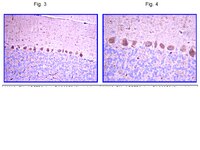Development of retinal pigment epithelium from human parthenogenetic embryonic stem cells and microRNA signature.
Li, WB; Zhang, YS; Lu, ZY; Dong, LJ; Wang, FE; Dong, R; Li, XR
Investigative ophthalmology & visual science
53
5334-43
2011
Show Abstract
We investigated the potential of human parthenogenetic embryonic stem cells (hPESCs) to differentiate into RPE cells, and identified development-regulating microRNAs (miRNAs).RPE cells were derived from hPESCs. The expression of markers and miRNA expression profiles during differentiation were studied by immunocytochemistry, real-time RT-PCR, and miRNA expression array at three time points. Human fetal RPE (hfRPE) cells also were analyzed. The target genes of candidate miRNAs then were validated.hPESC-derived RPE cells exhibited similar morphology and pigmentation to hfRPE cells. The expression of markers during differentiation indicated that the hPESC-derived RPE cells were immature. Most specific miRNAs had a role at some time point during the differentiation and maturation of RPE from hPESCs, except for two miRNAs (miR-204 and the miR-302 family). The miR-204 was upregulated and miR-302 was down-regulated throughout the process. Subsequently, pigmented clusters and RPE signature gene expression increased significantly in the miR-204 overexpression group and miR-302 inhibition group compared to the control groups. CTNNBIP1 and TGFBR2 were confirmed to be the target genes of miR-204 and miR-302, respectively.hPESCs can develop into RPE-like cells and, thus, can be additional promising sources of RPE cells in cell therapy. The miR-204, miR-302s, and their targets are involved in regulating directed differentiation during the full course, thereby contributing to the search for a new method of improving differentiation efficiency using miRNAs. | 22736612
 |









